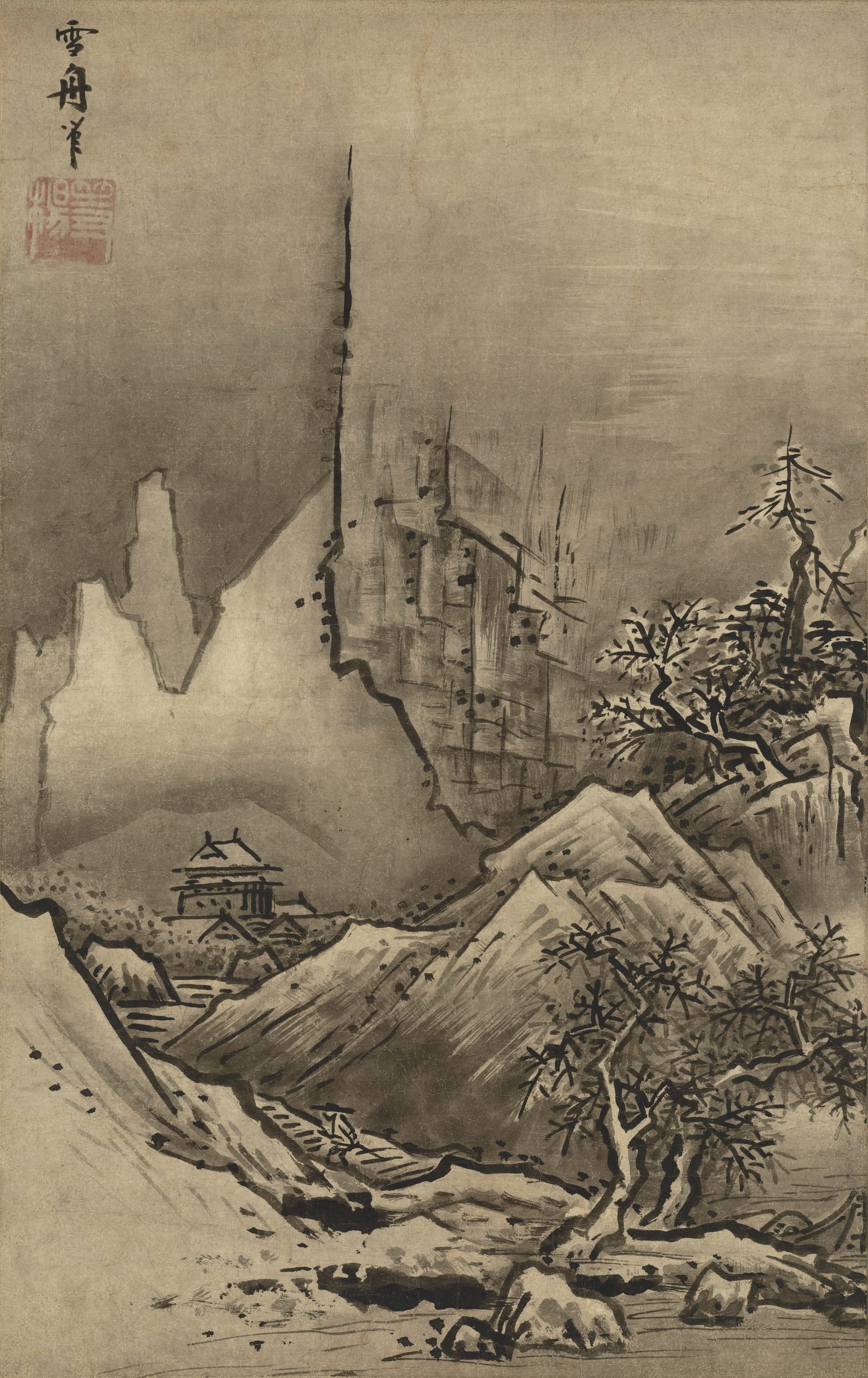 |
Winter Landscape, Sesshu 1470s
|
Winter Landscape by Sesshu was completed in the 1470s. Sesshu had trained for 20 years as a Zen monk painter under Shubun. When Sesshu returned from China he stayed in the provinces to avoid the civil war that was taking place in Kyoto, Japan. This painting differs from the previous paintings he made in China which were of Shubun style. In this painting Sesshu uses sumi-e painting. Sumi-e painting is made from using Chinese ink which is created from burning pine twigs and mixing it with resin. In this painting he uses jagged brush strokes to depict a series of rocky hills where a figure makes his way to a Zen monastery. He uses overlapping planes to show the composition of the hilly land. The white is on the painting to show the snow from the harsh and cold climate and the sky if gray showing the cloudy weather. Zen Buddhism played a large role in Japanese arts because they believed in Nirvana or achieving enlightenment. Painting nature or the landscape allowed artists to truly encourage a deeper experience and understanding of nature.
 |
| Bull and Puppy, Nagasawa Rosetsu |
By the middle of the eighteenth hundreds schools of independent artist emerged in Kyoto to satisfy demands for naturalistic style paintings that reflected this fascination. The most influential was founded by Maruyama Okyo who had perfected methods to incorporate western shading and perspective. He used this style in a more Japanese decorative way to create a new volume of East Asian painting. Okyo's most famous pupil was Nagasawa Rosetsu who created the Bull and Puppy. In this painting he uses six large panel screens to portray a bull and a puppy. The bull is so large that it takes up most of the space on the panels. However the small puppy still stands out because of its white shade against the dark gray shade of the bull. The puppy's relaxed tone increases the charm of the painting. Nagasawa was a master at surprising viewers with odd and humorous compositions.
 |
Battle Scene, Hide Painting , Mandan 1797-1800
The Great Plains were known for the residence of Native Americans in United States history. This painting is created on a buffalo hide robe that was presented by Lewis and Clark by the Mandan. It depicts a battle they fought against the Sioux Indians near North Dakota. The painting depicts a full conflict that was fought by five indian nations and shows warriors in 22 different parts. The party is led by a man with a pipe and an eagle-feathered headress. It shows the warriors armed with bows and arrows, clubs, lances, and flint-knock pistols. The creator of this painting used red, green, black, yellow, and brown pigments and a porcupine quill to draw all these illustrations. This paining shows the similarity for many native american paintings. Many different tribes used hides of animal skin to paint on. They also showed art by making fancy headresses, blankets, pots, etc.
|
 |
| Tattooed Natice of Nukahiva |
Tattooing in Oceania was widespread and ancient. They would use similar tools used to decorate Lapita pottery, which means their was some symbolic meaning in marking pottery and the human skin. The people in this region used chiseled bones to create a sharp point in order to apply the ink. The Polynesians who were descendants of the Lapita people brought tattooing along with them throughout the Pacific. Although the people eventually split up and resided in different areas of the world, spirals and rows of triangles became the hallmark of the Maori tattoos. The people of the Polynesian islands would tattoo young men of high social rank around the age of 18. By 30 years old their body would be completely tattooed to show prestige and matureness. This tradition remained sacred for women as well who would get tattoos on their hands, ankles, lips, and behind the ears.
 |
Kente Cloth, Asante 1980
The Asante empire located in the country of Ghana was known for its prized Kente Cloth. Kente is the Asante word for basket which acknowledges the woven like nature of the fabric. Asante weavers, usually men, worked on double heddle looms which allowed them to create long strips of cloth with vertical stripes that alternate with horizontal bands and geometric shapes and patterns. These strips of cloth were then woven together to form one large rectangle of Kente cloth. these patterns were also intentionally made random so the cloth was more dazzling and less predictable. Kente cloth is still worn by the royal family and it is very expensive. This type of art differs from western style of art because it is more fabric and sculpture based. African American art involved many more sculptures to depict different actions and events. Western art did not incorporate sculpting to such a high degree. African American art also had more art made by weaving cloth and making unique blankets and clothing. |





No comments:
Post a Comment